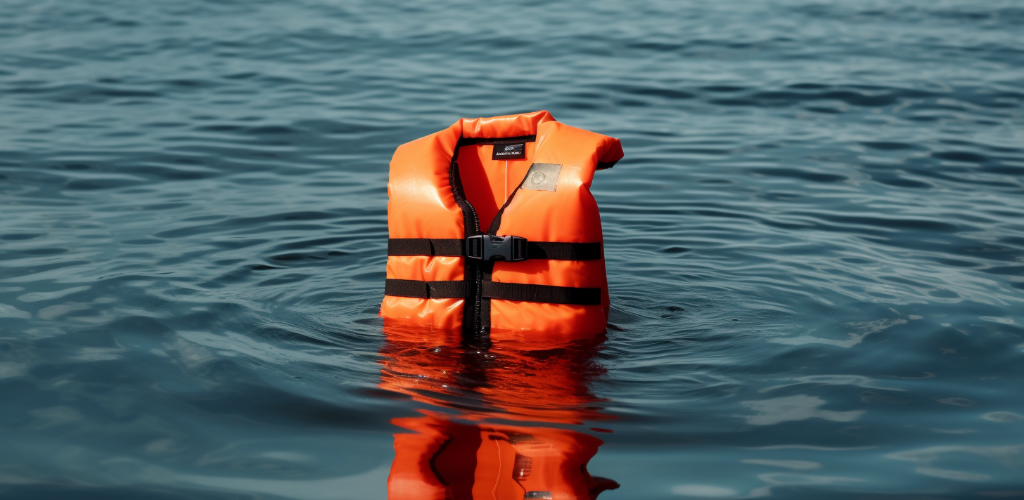There’s nothing quite like the thrill of water sports, is there? The rush of adrenaline as you ride the waves, the wind in your face, and the water beneath you. But amidst all the excitement, there’s one piece of equipment that stands as a silent guardian – your life jacket. This unassuming piece of gear is a lifesaver, both literally and figuratively. But have you ever stopped to wonder what your life jacket is made of? What materials come together to make this vital piece of safety equipment? Well, let’s dive in and find out.
The Origin of Life Jackets
Life jackets, also known as personal flotation devices (PFDs), have a history as rich as the seas themselves. From the simple cork belts of the 19th century to the advanced devices we use today, life jackets have evolved significantly over the years. Initially, life jackets were made of simple materials like cork and balsa wood. These materials were chosen for their buoyant properties, but they were far from perfect. The quest for improvement led to the evolution of the life jacket materials we know today.
The Basics of Life Jacket Construction
At its core, a life jacket is made up of two major components: the outer shell and the inner buoyant material. The outer shell is designed to be tough and durable, able to withstand the harsh conditions of the sea. It’s also typically brightly colored to aid visibility in the water.
The inner material, on the other hand, is where the magic happens. This is what provides the buoyancy, the ability to keep you afloat in the water. It’s often made of a lightweight, buoyant material that can keep a person afloat, even under challenging conditions.
Together, these two components work in harmony to keep you safe and secure while you’re out on the water. But what are these materials, and why are they chosen? Let’s get into the nitty-gritty.
The Outer Shell of Life Jackets
Ever wondered what the outer shell of your life jacket is made of? Well, the materials selected for this crucial part of the jacket are not chosen randomly. They are specifically picked based on certain properties that make them ideal for the job.
Common Materials Used
Common materials used for the outer shell of life jackets include nylon and polyester. These materials are favored because of their excellent waterproof characteristics and remarkable durability. Imagine being in the heart of the sea, battling strong waves and winds, and all you have is your life jacket. You’d want it to be tough and resistant, right? That’s exactly why nylon and polyester are commonly used. They can withstand harsh conditions and still perform their life-saving function effectively.
High-end Materials Used
For those who engage in extreme water sports, there’s a need for something more advanced. High-end life jackets often incorporate tougher and more resilient materials. These materials, which are usually proprietary blends and advanced synthetics, offer superior strength, longevity, and resistance to the elements. They also often provide additional benefits such as UV resistance and anti-microbial properties.
The Inner Buoyant Material of Life Jackets
Now, let’s talk about what’s inside the life jacket – the inner buoyant material. This is the part that keeps you afloat in the water. It’s just as important as the outer shell, and the materials used for it are also carefully chosen.
Common Buoyant Materials
The most common buoyant materials used in life jackets are foam, kapok (a natural fiber), and air for inflatable jackets. Foam is a popular choice because it’s lightweight, durable, and, most importantly, it floats! Kapok, on the other hand, is used in some life jackets due to its excellent buoyancy and light weight. Inflatable jackets are filled with air, providing buoyancy only when needed, making them more comfortable and less bulky.
The Role of Buoyancy
Why is buoyancy so important, you ask? Well, it’s simple. Buoyancy is what keeps you afloat in water. It’s what prevents you from sinking and helps you stay on the water’s surface. The buoyant materials in life jackets are designed to provide enough buoyancy to keep the wearer’s head above water, even in challenging conditions. It’s a critical factor in the effectiveness of a life jacket, and it’s all thanks to the inner buoyant material.
| Material | Properties | Types of Life Jackets |
|---|---|---|
| Nylon | Durable, waterproof, lightweight | Inherent buoyancy, hybrid |
| Polyester | Water-resistant, strong, UV resistant | Inherent buoyancy, hybrid, inflatable |
| Foam | High buoyancy, lightweight, cheap | Inherent buoyancy, hybrid |
| Kapok | High buoyancy, natural material, buoyant even when soaked | Inherent buoyancy |
| Air | High buoyancy, adjustable | Inflatable |
Different Types of Life Jackets and Their Materials
Did you know that different types of life jackets use different materials? Inherent buoyancy jackets, for instance, often use durable and waterproof materials like nylon or polyester for the outer shell, with foam or kapok for buoyancy. Inflatable jackets, on the other hand, typically use polyester for the shell and air for buoyancy. Hybrid jackets, as the name suggests, combine the best of both worlds, using a mix of foam and air for buoyancy. The choice of material is driven by a range of factors, from cost and durability to weight and buoyancy requirements.
Evolution of Materials Over Time
Just like any industry, the materials used in life jackets have evolved over time, driven by improvements in technology and materials science. What started with simple cork jackets has now become a sophisticated industry with a focus on safety, comfort, and performance.
- Early life jackets were made from balsa wood or cork.
- With the advent of synthetic materials, life jackets became lighter and more comfortable, with nylon and polyester becoming the materials of choice for the outer shell.
- The introduction of foam brought a revolution in the buoyancy of life jackets, making them safer and more reliable.
- Inflatable life jackets, which use air for buoyancy, offer a high degree of buoyancy and can be adjusted to the wearer’s needs.
- Today, with the advancements in materials science, we see the use of advanced materials like flexible forms of kevlar and even nanomaterials in high-performance life jackets.
The Future of Life Jacket Materials
Ever wondered about the future of life jacket materials? As technology advances, so does the potential for creating more efficient, comfortable, and safe life jackets. There is a fascinating world of possibilities on the horizon. For instance, nanomaterials – materials manipulated on the scale of atoms and molecules – are being researched for their potential use in life jackets. Just imagine, a life jacket as thin as a sheet of paper but with the buoyancy to keep you afloat in the roughest of waters! Isn’t that something to look forward to?
The Importance of Understanding Life Jacket Materials
As a water sports enthusiast, it’s not just about knowing how to use a life jacket. It’s equally important to understand what it’s made of. Why, you ask? The materials used in your life jacket directly affect its performance, comfort, and most importantly, safety. Understanding these materials could help you make a more informed choice the next time you’re purchasing a life jacket. After all, it’s not just a piece of equipment, it’s a life-saving device!
Moreover, having this knowledge can help you properly care for and maintain your life jacket, ensuring it performs optimally when you need it most. So, the next time you’re out on the water, you’ll not only feel comfortable and secure but also have the peace of mind knowing you’re well-equipped with the right gear.
- Key Takeaway #1: The materials used in life jackets directly affect their performance, comfort, and safety.
- Key Takeaway #2: Future materials like nanotechnology could revolutionize the design and efficiency of life jackets.
- Key Takeaway #3: Understanding life jacket materials can help you make better purchasing decisions and properly care for your gear.
- Key Takeaway #4: Life jackets are more than just equipment; they are life-saving devices that require our understanding and appreciation.




